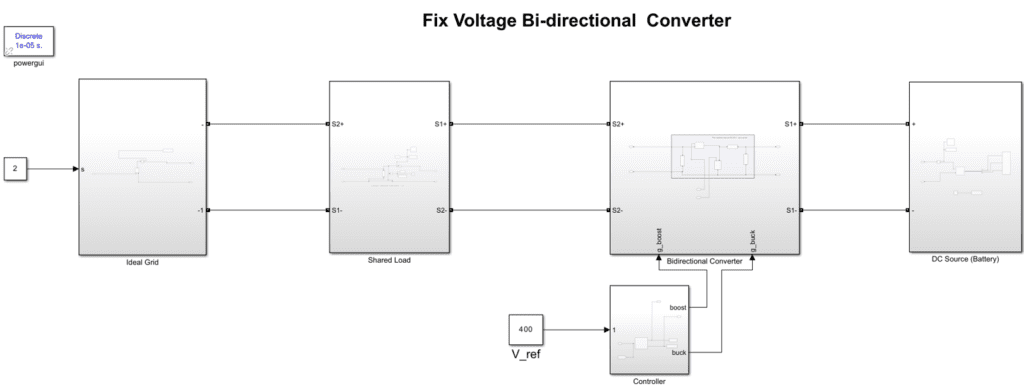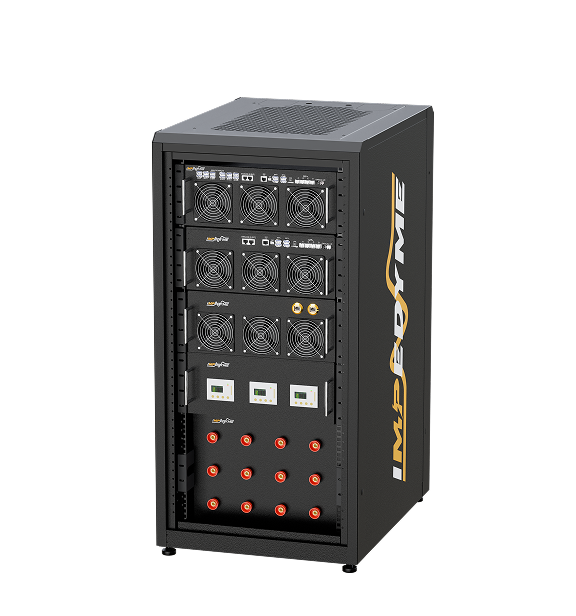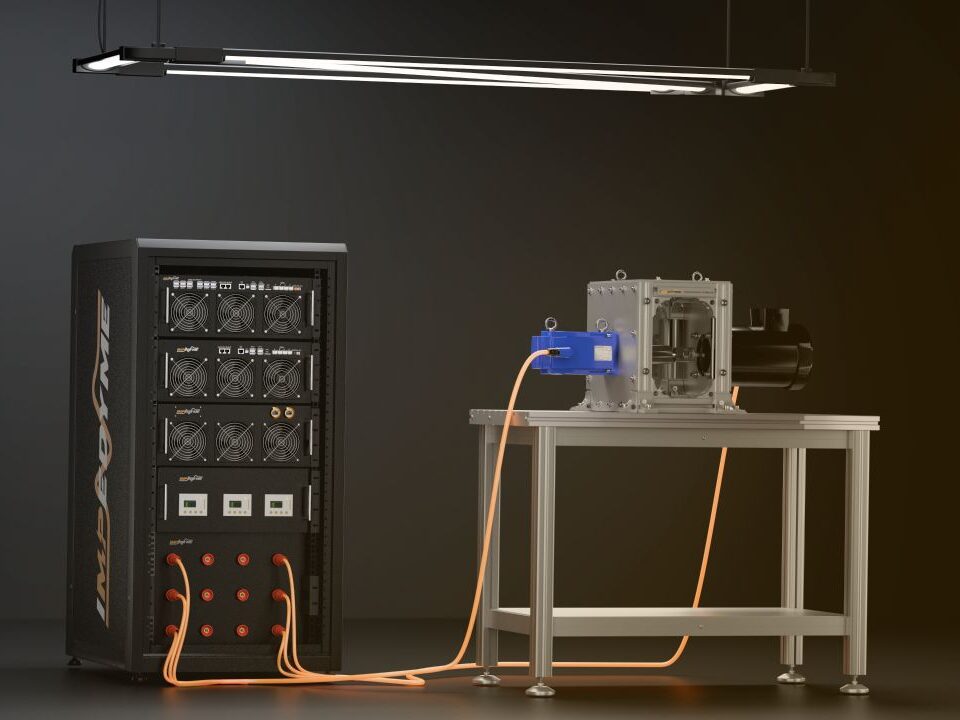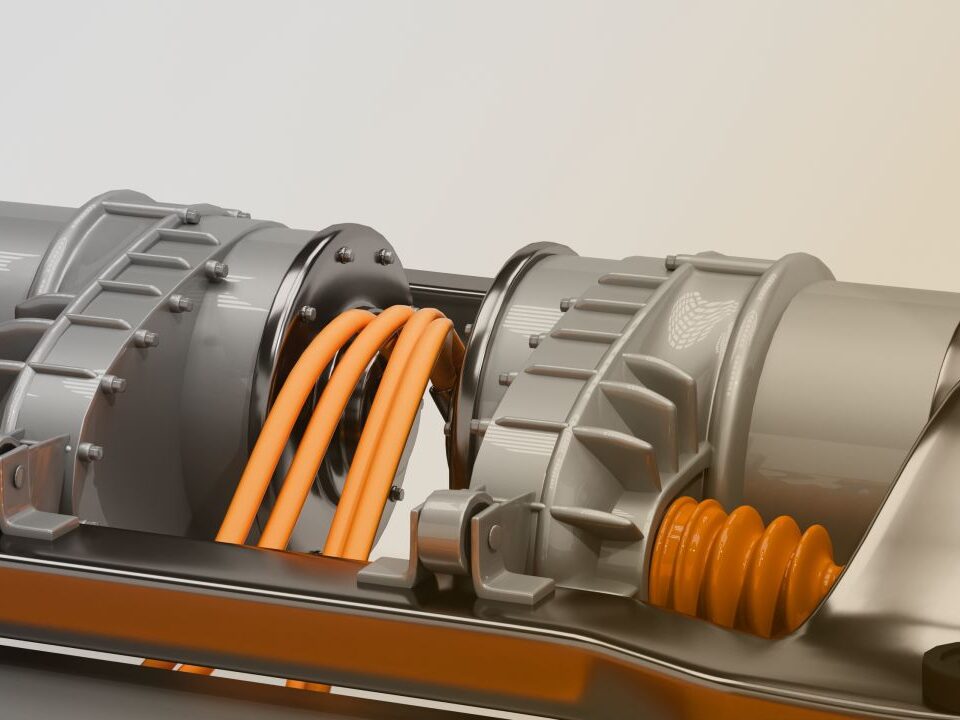
-
 Induction Motor
Induction Motor
-
 Automotive Electrical System Simulation
Automotive Electrical System Simulation
-
 DC/DC Bidirectional Converter
DC/DC Bidirectional Converter
-
 PWM Control for Brushless DC
PWM Control for Brushless DC
-
 BLDC Motor Control and Drive Simulation
BLDC Motor Control and Drive Simulation
-
 Electric Vehicle Fast Charger Simulation
Electric Vehicle Fast Charger Simulation
-
 DFIG Wind Turbine Simulation
DFIG Wind Turbine Simulation
-
 Dual Active Bridge
Dual Active Bridge
-
 EV Dynamometer Test Environment Simulation
EV Dynamometer Test Environment Simulation
-
 Electric Vehicle Simulation
Electric Vehicle Simulation
-
 Three-Phase Grid-Connected Inverter Using Direct-Q…
Three-Phase Grid-Connected Inverter Using Direct-Q…
-
 Three-Phase Grid-Connected Solar Photovoltaic
Three-Phase Grid-Connected Solar Photovoltaic
-
 Grid-Connected Rectifier
Grid-Connected Rectifier
-
 Grid-Tied Inverter System
Grid-Tied Inverter System
-
 Torque Control in a Hybrid Excitation Synchronous …
Torque Control in a Hybrid Excitation Synchronous …
-
 Wye-Delta Starting Circuit
Wye-Delta Starting Circuit
-
 IPMSM-Based Axle-Drive
IPMSM-Based Axle-Drive
-
 Simplified Parallel Hybrid Electric Vehicle
Simplified Parallel Hybrid Electric Vehicle
-
 Simplified Series Hybrid Electric Vehicle
Simplified Series Hybrid Electric Vehicle
-
 Series-Parallel Hybrid Electric Vehicle
Series-Parallel Hybrid Electric Vehicle
-
 Three-Phase Matrix Converter Simulation
Three-Phase Matrix Converter Simulation
-
 Venturini Modulation for Three-Phase Matrix Conver…
Venturini Modulation for Three-Phase Matrix Conver…
-
 Microgrid Frequency Regulation Using Vehicle-to-Gr…
Microgrid Frequency Regulation Using Vehicle-to-Gr…
-
 Three-Phase Modular Multilevel Converter
Three-Phase Modular Multilevel Converter
-
 Field-Oriented Control
Field-Oriented Control
-
 Interior Permanent Magnet Synchronous Generator
Interior Permanent Magnet Synchronous Generator
-
 Permanent Magnet Synchronous Machine
Permanent Magnet Synchronous Machine
-
 PMSM Rotor Angular Velocity
PMSM Rotor Angular Velocity
-
 PMSM-Based Electrical Traction Drive
PMSM-Based Electrical Traction Drive
-
 Maximum Power Point Tracking
Maximum Power Point Tracking
-
 Six-Phase Permanent Magnet Synchronous Machine
Six-Phase Permanent Magnet Synchronous Machine
-
 Synchronous Machine-Based Electrical Drive Simulat…
Synchronous Machine-Based Electrical Drive Simulat…
-
 Single-Stage Solar Inverter
Single-Stage Solar Inverter
-
 Three-Phase Cycloconverter Simulation
Three-Phase Cycloconverter Simulation
-
 Totem-Pole PFC Simulation
Totem-Pole PFC Simulation
-
 Twelve-Pulse Thyristor Rectifier
Twelve-Pulse Thyristor Rectifier
-
 Two-Wheeler On-Board Charger
Two-Wheeler On-Board Charger
-
 Vienna Rectifier Simulation
Vienna Rectifier Simulation
-
 High-Voltage Direct Current
High-Voltage Direct Current
-
 Wireless Power Transfer
Wireless Power Transfer

Comprehensive Documentation for DC/DC Bidirectional Converter for DC Bus Voltage Regulation
Table of Contents
- 1 Comprehensive Documentation for DC/DC Bidirectional Converter for DC Bus Voltage Regulation
- 1.1 Introduction
- 1.2 System Overview
- 1.2.1 What is a DC/DC Bidirectional Converter?
- 1.2.2 Purpose of the Simulation
- 1.3 Key Features
- 1.3.1 Dynamic Voltage Regulation
- 1.3.2 Bidirectional Power Flow Control
- 1.3.3 High-Efficiency Power Conversion
- 1.3.4 Compact Design
- 1.3.5 Flexibility
- 1.4 Simulation Objectives
- 1.5 Technical Description
- 1.5.1 System Configuration
- 1.5.2 Control Methodology
- 1.6 Advantages of DC/DC Bidirectional Converters
- 1.7 Applications
- 1.7.1 Electric and Hybrid Vehicles (EVs/HEVs)
- 1.7.2 Renewable Energy Systems
- 1.7.3 Data Centers
- 1.7.4 Energy Storage Systems (ESS)
- 1.7.5 Aerospace and Defense
- 1.7.6 Industrial Automation
- 1.7.7 Telecommunications
- 1.7.8 Marine and Offshore Applications
- 1.8 Simulation Benefits
- 1.9 Summary
- 1.10 Future Enhancements
- 1.11 Conclusion
- 1.11.1 Induction Motor
- 1.11.2 Automotive Electrical System Simulation
- 1.11.3 PWM Control for Brushless DC
- 1.11.4 BLDC Motor Control and Drive Simulation
Introduction
This model simulates a DC/DC bidirectional converter designed to regulate and maintain the DC bus voltage, independent of power variations in a microgrid (MG). The converter ensures stable operation under fluctuating load and generation conditions, making it ideal for energy storage and grid integration applications.

System Overview
What is a DC/DC Bidirectional Converter?
A DC/DC bidirectional converter facilitates power transfer between two DC voltage levels while allowing energy flow in both directions. This capability is crucial for applications involving battery storage systems, renewable energy integration, and electric vehicles.
Purpose of the Simulation
The simulation aims to:
- Stabilize the DC bus voltage by dynamically regulating power flow.
- Analyze power transfer efficiency between energy storage and the DC grid.
- Evaluate control strategies for seamless bidirectional operation.
Key Features
Dynamic Voltage Regulation
The converter actively regulates DC bus voltage, ensuring stable operation under varying load conditions. ➡️ HIL/PHIL Benefit: Real-time voltage control testing for improved stability in microgrids and DC networks.
Bidirectional Power Flow Control
Supports charging and discharging energy storage units, optimizing energy utilization in microgrid applications. ➡️ HIL/PHIL Benefit: Enables validation of energy management strategies in simulated and real environments.
High-Efficiency Power Conversion
Utilizes advanced switching techniques to minimize losses and improve overall system efficiency. ➡️ HIL/PHIL Benefit: Provides insights into real-world efficiency improvements before hardware implementation.
Compact Design
Provide high power density, making them suitable for space-constrained applications.
Flexibility
Support a wide range of input and output voltage levels.
Simulation Objectives
This simulation helps evaluate:
- Voltage stabilization performance under load variations.
- Efficiency of bidirectional power transfer in DC networks.
- Effectiveness of control strategies in maintaining stable operation. ➡️ HIL/PHIL Benefit: Enables pre-deployment testing of control algorithms, reducing design risks.
Technical Description
System Configuration
- Input: DC power source (battery, supercapacitor, or renewable energy system).
- Output: DC bus (microgrid, vehicle DC network, or industrial power system).
- Power Stage: High-frequency switching components (IGBTs, MOSFETs, or SiC devices).
Control Methodology
- Voltage Mode Control (VMC) and Current Mode Control (CMC).
- Closed-loop feedback for real-time voltage regulation.
- Seamless transition between charging and discharging modes. ➡️ HIL/PHIL Benefit: Enables real-time validation of control strategies using simulated power grids and energy storage systems.
Advantages of DC/DC Bidirectional Converters
- Enhanced Power Stability: Ensures stable DC bus voltage even under fluctuating load and generation conditions.
- Optimized Energy Storage Utilization: Enables efficient charging and discharging for battery-based applications.
- High Efficiency and Fast Response: Reduces energy losses while maintaining rapid response to system changes. ➡️ HIL/PHIL Benefit: Allows real-time efficiency testing under various operating scenarios.
Applications
Electric and Hybrid Vehicles (EVs/HEVs)
Battery Management: Bidirectional DC/DC converters regulate the voltage between the high-voltage battery pack and the low-voltage auxiliary systems (e.g., 12V or 48V systems) in EVs and HEVs.
Regenerative Braking: They enable energy recovery during braking by transferring power from the motor to the battery, improving overall efficiency.
On-Board Charging: Bidirectional converters are used in on-board chargers to manage power flow between the grid and the vehicle’s battery.
Renewable Energy Systems
Solar Power Systems: Bidirectional DC/DC converters regulate the voltage between solar panels, battery storage, and the DC bus in off-grid or hybrid solar systems.
Wind Energy Systems: They manage power flow between wind turbines, batteries, and the DC bus, ensuring stable voltage and efficient energy storage.
Microgrids: Bidirectional converters are used in DC microgrids to balance power flow between renewable sources, storage systems, and loads.
Data Centers
Power Distribution: Bidirectional DC/DC converters are used in data centers to regulate voltage between servers, storage systems, and backup power sources.
Energy Efficiency: They improve energy efficiency by managing power flow between different voltage levels and ensuring stable operation.
Energy Storage Systems (ESS)
Battery Energy Storage: Bidirectional DC/DC converters regulate the voltage between battery banks and the DC bus, enabling efficient charging and discharging.
Grid Integration: They facilitate the integration of energy storage systems with the grid, providing voltage regulation and peak shaving.
Uninterruptible Power Supplies (UPS): Bidirectional converters ensure stable DC bus voltage in UPS systems, providing backup power during outages.
Aerospace and Defense
Aircraft Power Systems: Bidirectional DC/DC converters regulate voltage between aircraft batteries, generators, and onboard systems, ensuring reliable power supply.
Military Vehicles: They are used in electric and hybrid military vehicles to manage power flow between batteries, motors, and auxiliary systems.
Satellite Systems: Bidirectional converters regulate voltage between solar panels, batteries, and payloads in satellite power systems.
Industrial Automation
Motor Drives: Bidirectional DC/DC converters are used in industrial motor drives to regulate voltage and enable regenerative braking.
Robotics: They manage power flow between batteries, motors, and control systems in robotic applications, ensuring efficient operation.
Power Supplies: Bidirectional converters provide stable DC bus voltage in industrial power supplies, improving reliability and performance.
Telecommunications
Base Stations: Bidirectional DC/DC converters regulate voltage between batteries, solar panels, and telecom equipment in remote base stations.
Backup Power: They ensure stable DC bus voltage in telecom backup power systems, providing reliable operation during outages.
Marine and Offshore Applications
Shipboard Power Systems: Bidirectional DC/DC converters regulate voltage between batteries, generators, and onboard systems in electric and hybrid ships.
Offshore Platforms: They manage power flow between renewable energy sources, batteries, and loads on offshore oil and gas platforms.
Industrial DC Power Networks: Stable power delivery in mission-critical applications. ➡️ HIL/PHIL Benefit: Enables real-time validation of these applications before field deployment.
Simulation Benefits
With this simulation, users can:
- Analyze bidirectional power transfer efficiency.
- Optimize DC bus voltage regulation strategies.
Validate real-world energy storage interactions. ➡️ HIL/PHIL Benefit: Ensures smooth transition from simulation to real-world deployment with precise hardware validation.
Summary
The DC/DC Bidirectional Converter Simulation provides an essential tool for studying DC bus voltage regulation, enabling effective energy storage integration and grid stability. Impedyme’s HIL and PHIL solutions streamline the development process:
| Development Stage | Impedyme’s Contribution |
|---|---|
| Control Design | RCP using HIL for rapid control algorithm validation |
| Control Hardware Testing | CIL with real-time converter models |
| Power Stage Verification | PHIL with real voltage and power interaction |
| Final Validation | Full-system PHIL under realistic conditions |
Future Enhancements
- Integration of AI-based predictive control for dynamic voltage regulation.
- Advanced topologies for ultra-high efficiency in power conversion.
- Compatibility with future DC microgrid architectures.
Conclusion
The DC/DC Bidirectional Converter Simulation offers a powerful platform for developing next-generation DC power systems. With Impedyme’s HIL/PHIL solutions, engineers can optimize power flow, improve energy efficiency, and ensure reliable voltage regulation before real-world implementation.






